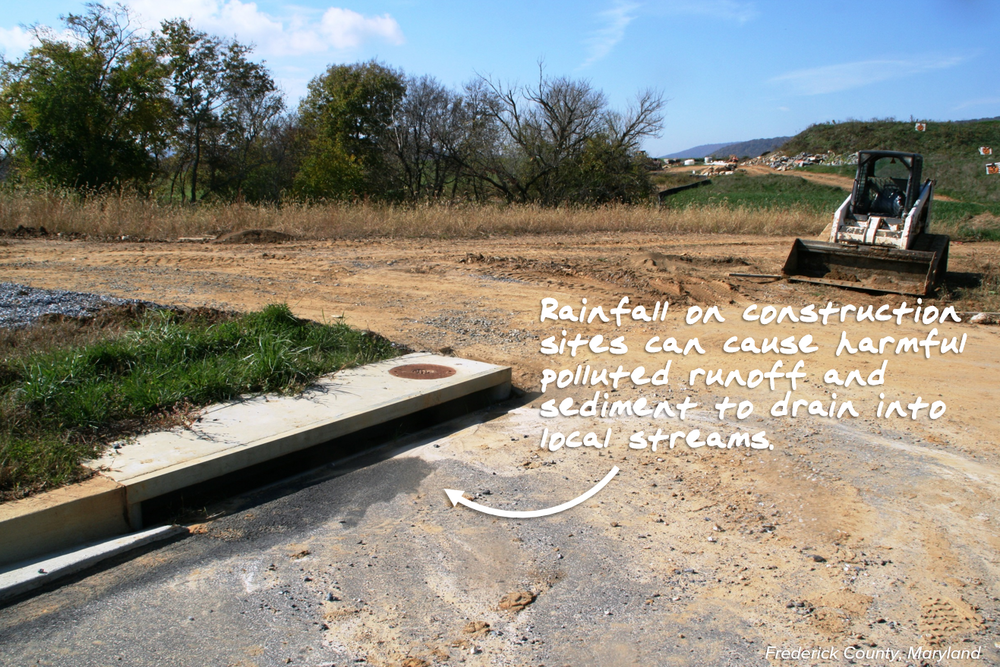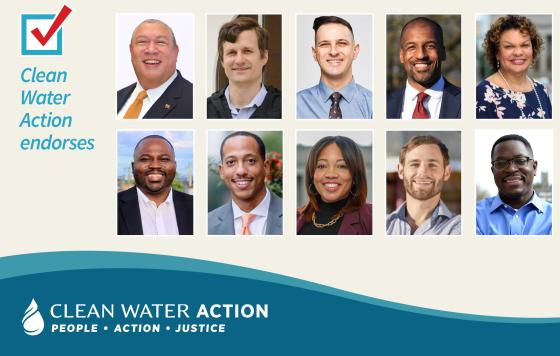
“Generally, they’re getting worse.”
That was the verdict on Frederick County’s local streams at last night’s public hearing on the County’s Financial Assurance Plan, a document that should outline how the County government will pay for stormwater restoration projects mandated by the Chesapeake Bay Plan. These projects, including reforestation, street tree plantings, bioretention projects, storm drain cleaning, and rain gardens, reduce the volume of rain water that enters our waterways during storms and cleans it of trash, oil, and other pollutants before it reaches our streams and rivers. State law requires that Frederick construct projects by 2019 that will treat 20 percent of the rain water that falls on impervious surfaces in the County – places like streets, sidewalks, and roofs where rain can’t soak into the ground. But the plan proposed falls far short of that goal.
Despite assertions by Council member Billy Shreve that “I don't know of any stream in Frederick where you can't drink the water or there are parasites in it that can kill you … so we don't have any big problems,” waterways in Frederick County are dangerously polluted. Testing last year by Hood College’s Coastal Studies Program and the Chesapeake Bay Foundation found that all of the streams sampled consistently contained a higher fecal bacteria count than the EPA deems safe for “moderate bathing use”.
Adequately funding projects to reduce polluted runoff can help repair Frederick’s failing waterways. But by relying on unproven nutrient trading techniques that will solve the problem on paper while providing no actual water quality improvements, the Financial Assurance Plan proposed by Frederick falls far short.
Read our testimony on this plan below, view the hearing itself here at 0h54m and 5h45m and stay tuned for how you can support clean waterways in Frederick County!
Thank you for the opportunity to comment on Frederick’s Financial Assurance Plan. My name is Jennifer Kunze, and I’m the Maryland Organizer for Clean Water Action, a grassroots environmental nonprofit with 53,000 members in our state working for clean water and public health. We want to thank the Sustainability and Environmental Resources Office for their hard work and transparency in developing this plan. However, we have some very significant concerns to share.
Under Maryland’s Watershed Implementation Plan, Frederick must install projects that do the equivalent of retrofitting 20% of its impervious surfaces to prevent polluted runoff. This Financial Assurance Plan should outline what projects the County will construct to meet this goal, and how they will be paid for.
Our biggest concern is the Plan’s reliance on trading to account for 255.8 acres’ worth of restoration projects. This is one-quarter of the total acreage of restoration projects the County should be funding, and these on-paper trading schemes will not reduce the actual amount of flooding and pollution that we see in our local streams and rivers. Instead of relying on accounting tricks to meet requirements on paper – if the MDE chooses to accept these trades, which it may not – the County should complete real restoration projects that will have tangible benefits to water quality and to communities throughout the County.
Frederick County should be devoting more funding to these projects. Almost every county with a Financial Assurance Plan is dedicating more money to stormwater restoration projects than Frederick County, and to get on track to meeting regulatory deadlines and improving Frederick’s failing watersheds, the County should follow suit.
These restoration projects, if funded as intended, could have real benefits for Frederick’s waterways and neighborhoods that trading solutions do not. These projects are local solutions to local problems of flooding and pollution that consistently makes Frederick’s local streams fail on water quality. For example, over the past year I have managed a rain garden design and construction project at my church that was paid for through a grant funded by our local stormwater remediation fees. This bowl-shaped garden that holds stormwater runoff in place until it can soak into the ground solved real problems with flooding and runoff on our grounds and provided tangible benefits to us and our neighbors, aside from the downstream effects. Likewise, in my parents’ neighborhood north of Frederick City, a stream restoration project in the local park has both beautified the park fixed problems with the eroding banks of the stream. Allocating more funding for green infrastructure projects like these, which this FAP neglected in 2015 and 2016, would provide many additional benefits to taxpayers that paying for paper credits through trading do not.
Because of the real need to improve the quality and health of Frederick’s waterways by addressing the polluted runoff problem, Clean Water Action urges the Council to carefully consider these shortcomings in the Financial Assurance Plan and more fully fund restoration projects that will meet the Watershed Implementation Plan’s regulatory demands and improve our streams and rivers. Thank you.



